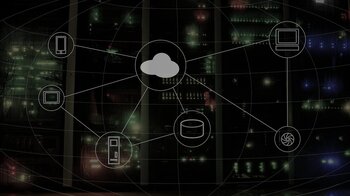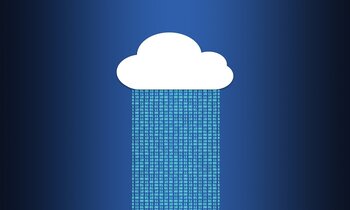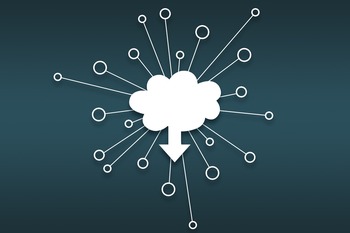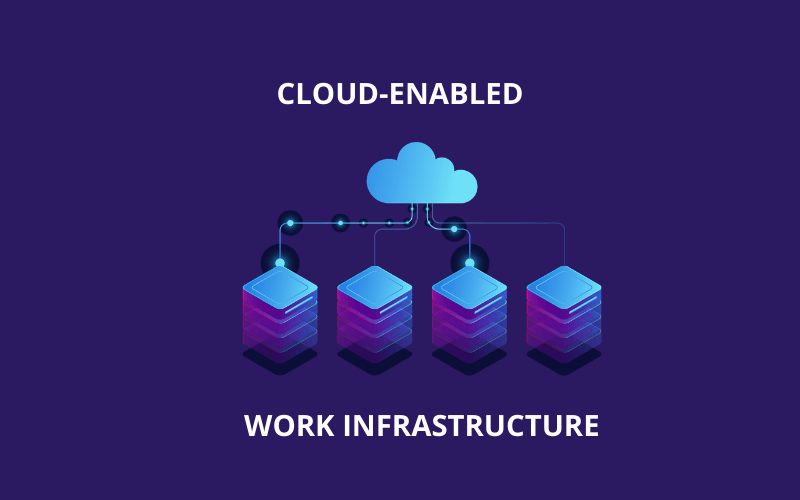The global pandemic has triggered a crucial shift in business-architecture. Many organizations have had to switch their cloud strategies. The global IT decision-makers concur the pandemic will influence organizations to accelerate the process of adopting cloud-driven work infrastructure. This in-turn predicts a decline in on-premise workloads by 2025. Across the world, companies spent 34.6 billion USD on cloud services in the second quarter which is 11% up from the previous quarter. This blog describes the need for cloud-driven work infrastructure in the post-pandemic world.
Challenges in Cloud Migration
 Major public cloud providers observed a huge surge in demand for their services as most of the global workforce started to adopt remote strategies. This sudden shift stressed the traditional infrastructure and demanded to shift to the cloud swiftly that leaves room for further optimization. The tightly interlocked business and technology architectures remain vulnerable as the stress has become apparent. While organizations respond to COVID-19 with cloud-focus, they are tiding over IT complexity, cybersecurity risk and efficiency challenges. Some organizations are deprioritizing and delaying cloud migration plans. On the other hand, resilient leaders have an opportunity to modernize their technology backbones with scalable cloud infrastructure.
Major public cloud providers observed a huge surge in demand for their services as most of the global workforce started to adopt remote strategies. This sudden shift stressed the traditional infrastructure and demanded to shift to the cloud swiftly that leaves room for further optimization. The tightly interlocked business and technology architectures remain vulnerable as the stress has become apparent. While organizations respond to COVID-19 with cloud-focus, they are tiding over IT complexity, cybersecurity risk and efficiency challenges. Some organizations are deprioritizing and delaying cloud migration plans. On the other hand, resilient leaders have an opportunity to modernize their technology backbones with scalable cloud infrastructure.
Multi-Cloud for Remote Workforce
 Organizations who are using cloud infrastructure are increasingly employing multi-cloud strategy. Many of them are using a hybrid which is a combination of public and private cloud infrastructure model. They believe that hybrid cloud is the standard IT operating model. Many organizations have moved beyond the initial challenge of choosing multiple cloud providers, assessing what data to store in public or private cloud services, and controlling interoperability across their multiple cloud infrastructures.
Organizations who are using cloud infrastructure are increasingly employing multi-cloud strategy. Many of them are using a hybrid which is a combination of public and private cloud infrastructure model. They believe that hybrid cloud is the standard IT operating model. Many organizations have moved beyond the initial challenge of choosing multiple cloud providers, assessing what data to store in public or private cloud services, and controlling interoperability across their multiple cloud infrastructures.
Full-Stack Multi-Cloud for Future Workforce
 The upcoming margin in managing cloud complexity will be about enabling the foundation by configuring software, tools, and technology to provide a full-stack multi-cloud solution. It will include identity and access management (IDAM), network monitoring, artificial intelligence, or metadata management for various IT operations to manage workforce systems. It should consider orchestration across these tools and technologies to effectively manage data, resources, and workflows.
The upcoming margin in managing cloud complexity will be about enabling the foundation by configuring software, tools, and technology to provide a full-stack multi-cloud solution. It will include identity and access management (IDAM), network monitoring, artificial intelligence, or metadata management for various IT operations to manage workforce systems. It should consider orchestration across these tools and technologies to effectively manage data, resources, and workflows.
Challenges in Multi-Cloud
 The only challenge for multi-cloud solutions in a pandemic context is finding a good application that fits for cloud technologies quickly. Organisations are tempted to leverage whatever platform or service is in a hype cycle. But, shifting to an application that is not a good fit for any new platform is typically going to fail. They should understand the application itself, the data relationship and the underlying architecture to assess if any of these new technologies is a fit.
The only challenge for multi-cloud solutions in a pandemic context is finding a good application that fits for cloud technologies quickly. Organisations are tempted to leverage whatever platform or service is in a hype cycle. But, shifting to an application that is not a good fit for any new platform is typically going to fail. They should understand the application itself, the data relationship and the underlying architecture to assess if any of these new technologies is a fit.
AIOps in CloudOps
 The evolving area within CloudOps is AIOps. There has been an evolution from reactive monitoring to predictive monitoring in the cloud infrastructure and now organizations are moving to a new era of AIOps. The use of AIOps provides the means to create layers of automation that can react to events and launch corrective processes. This includes detection of packet errors coming from a single network device and momentarily routing around that device until it is replaced. AIOps tools can analyse the data coming from all systems and devices to estimate when something is failing.
The evolving area within CloudOps is AIOps. There has been an evolution from reactive monitoring to predictive monitoring in the cloud infrastructure and now organizations are moving to a new era of AIOps. The use of AIOps provides the means to create layers of automation that can react to events and launch corrective processes. This includes detection of packet errors coming from a single network device and momentarily routing around that device until it is replaced. AIOps tools can analyse the data coming from all systems and devices to estimate when something is failing.
Securing the Multi-tiered Cloud Architecture
 Organizations are planning to secure the multi-tiered architecture encompassing the cloud, the edge, mobile, and IoT. To ensure better security, they have to secure each architecture tier against threats specific to that tier. So, managing heterogeneous infrastructure demands a heterogeneous cybersecurity model. Organizations should combine remediation and infrastructure monitoring at the end-point level with DevSecOps which should be coupled with Artificial Intelligence for predictive and automated threats management, monitoring, and resolutions.
Organizations are planning to secure the multi-tiered architecture encompassing the cloud, the edge, mobile, and IoT. To ensure better security, they have to secure each architecture tier against threats specific to that tier. So, managing heterogeneous infrastructure demands a heterogeneous cybersecurity model. Organizations should combine remediation and infrastructure monitoring at the end-point level with DevSecOps which should be coupled with Artificial Intelligence for predictive and automated threats management, monitoring, and resolutions.
Trusted Access in a Remote World
 Most of the enterprise cloud security infrastructure attacks are due to a lack of proper governance and security parameters related to role-based access control. Identity access is still one of the top vulnerabilities. Identity access management roles are impacted by cloud security breaches. From managing security across distributed remote resources, centralized security management is a timeless concept. The focus on access privileges in the identity management remains a cornerstone of network security, especially as the new remote-working conditions have increased the remote network attack landscape.
Most of the enterprise cloud security infrastructure attacks are due to a lack of proper governance and security parameters related to role-based access control. Identity access is still one of the top vulnerabilities. Identity access management roles are impacted by cloud security breaches. From managing security across distributed remote resources, centralized security management is a timeless concept. The focus on access privileges in the identity management remains a cornerstone of network security, especially as the new remote-working conditions have increased the remote network attack landscape.
Cloud Security - Zero Trust Approach
 A zero-trust approach to cybersecurity can help organizations preserve data integrity and security, as perimeters vanish. The approach moves from network-based control to identity-based with access controls and identity management as a priority. Organizations take a “never trust and always verify” approach to improve their cyber posture across devices. It empowers administrators to monitor, track, control software, hardware and user access to the respective clouds. It can be done in real-time.
A zero-trust approach to cybersecurity can help organizations preserve data integrity and security, as perimeters vanish. The approach moves from network-based control to identity-based with access controls and identity management as a priority. Organizations take a “never trust and always verify” approach to improve their cyber posture across devices. It empowers administrators to monitor, track, control software, hardware and user access to the respective clouds. It can be done in real-time.
DevOps in Distributed World
 Organizations succeed with small cloud migration. But they stumble over organizational and process bottlenecks when it comes to scaling the cloud. DevOps can streamline these processes. It promotes great communication and collaboration to ensure better-quality software more quickly with more reliability. The easiest part of DevOps is the technology that includes automated scripts, continuous integration and delivery, and automated provisioning. Organizations tend to struggle while transforming existing processes and structures to enable automation and drive a culture change across a range of operations. These can be easily done with change management, deployment, user acceptance testing, security, compliance, and ongoing product strategy.
Organizations succeed with small cloud migration. But they stumble over organizational and process bottlenecks when it comes to scaling the cloud. DevOps can streamline these processes. It promotes great communication and collaboration to ensure better-quality software more quickly with more reliability. The easiest part of DevOps is the technology that includes automated scripts, continuous integration and delivery, and automated provisioning. Organizations tend to struggle while transforming existing processes and structures to enable automation and drive a culture change across a range of operations. These can be easily done with change management, deployment, user acceptance testing, security, compliance, and ongoing product strategy.
The ways of working have been altered in profound ways. It prompts organizations to adopt cloud technology for the future of the productive and secured workforce. The combination of multi-cloud solutions, cloud security, AIOps and DevOps can help create a future of cloud-enabled work infrastructure.
Learn more on Acceleration in Cloud Strategies – Before COVID-19 vs After COVID-19







